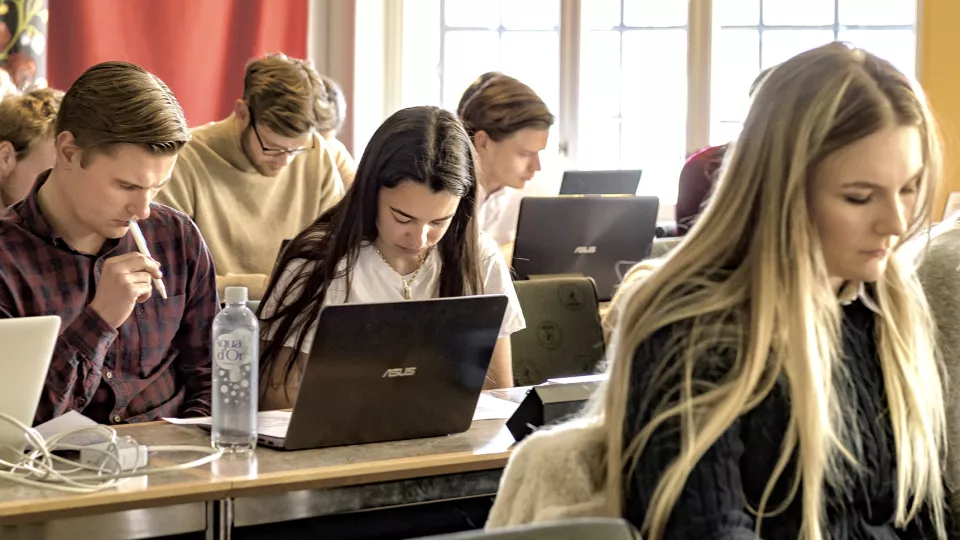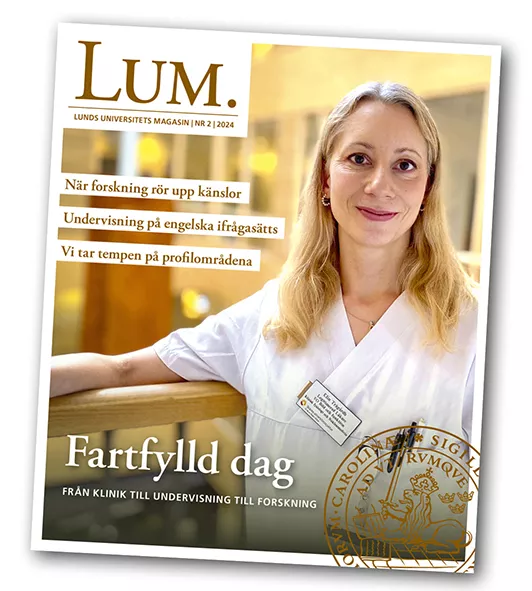Digitalisation and the increase in working from home have led to offices being used less than before. According to the head of LU Estates, Åsa Bergenudd, many organisations want their own offices for employees. And yet, one study showed that the utilisation rate is down to 30-50 per cent.
In an email response to LUM, Åsa Bergenudd writes: “In order to reduce LU’s total area, we need to start a discussion within LU about whether everyone should have their own office? If we start sharing our offices and premises more, we will most likely reduce our footprint in terms of space and the climate.”
Uneven occupancy
Lecture halls and examination rooms are sometimes empty for days or large parts of the day, yet sometimes they are occupied to capacity and the University is forced to rent external premises to accommodate all those taking exams. With a more constant occupancy rate, the number of rooms needed would not be as high as today, but to achieve this, bookings need to be more even over time, which has proved difficult up to now. According to Åsa Bergenudd, part of their investigation will focus on whether it is possible to make teaching facilities more flexible so that usage can increase.
Akademiska Hus has begun work to help universities in Sweden use their facilities more efficiently. This applies to lecture halls, self-study spaces and offices. Measuring has started in some parts of the country, and this autumn a project will also start at Lund University.
“We have opened a dialogue with Lund. We are prepared to take back premises if it turns out after this work that higher education institutions don’t need them,” says Peter Anderson, CFO of Akademiska Hus.
Will use sensors to measure
Utilisation is measured by sensors that register when and where there is activity at premises. The sensors can register hour by hour. The measured utilisation rate can then lead to suggestions for changing booking rules and scheduling for classrooms or for administrative staff to share offices more.
According to Peter Anderson, this could be as simple as making it clear in advance who is in the office on a given day and who is working from home.
“In general, we believe that Swedish higher education institutions could increase their utilisation for premises by 20-25%, which in turn should mean that they can reduce the amount of space they use, which would be good from a sustainability perspective. Among other things, this would lead to fewer new buildings and that we could take back premises that higher education institutions do not need and rent them out to other parties, who would strengthen the campus instead.”
Each faculty responsible
In Lund, each faculty is responsible for how much space it feels it needs. In addition to the sensor measurements, LU Estates will look at how premises are used at the faculties over the autumn. According to Åsa Bergenudd, this will be done by producing key metrics that show how many square metres the faculty has per employee and student.
In her email response to LUM, she writes that LU Estates wants to get in touch with organisations “that want to review their premises with a view to rethinking and improving efficiency.” She also mentions that some areas can already be made more efficient, and she uses her own division as an example: “In LU Estates, about 50% of staff are in shared rooms and the need for rooms to take video meetings etc. arose when everyone came back after the pandemic. We then decided that everyone in individual offices should clean their desks and put a sign on the door when they are working from home, so that those in shared rooms can work undisturbed or have a video meeting. Our need for more rooms was solved overnight.”



